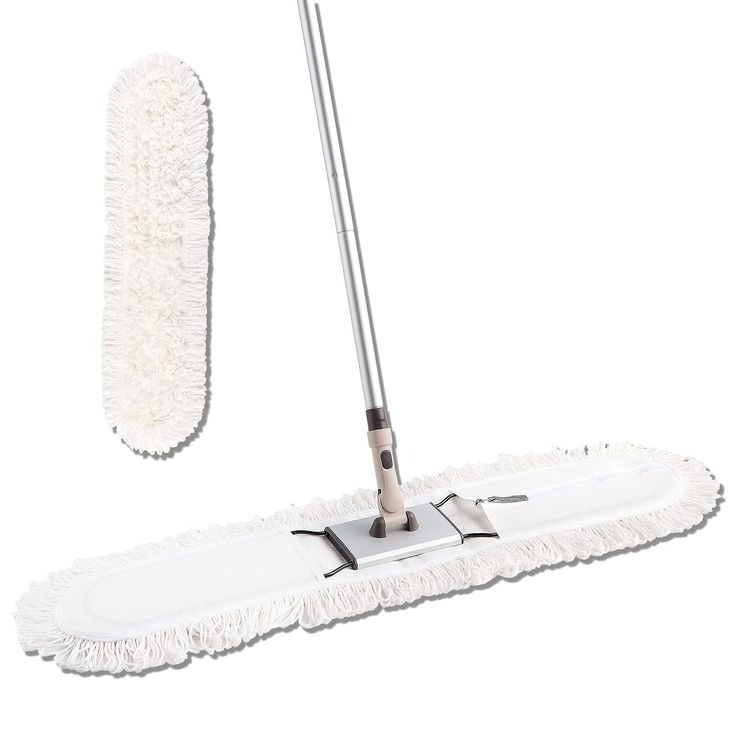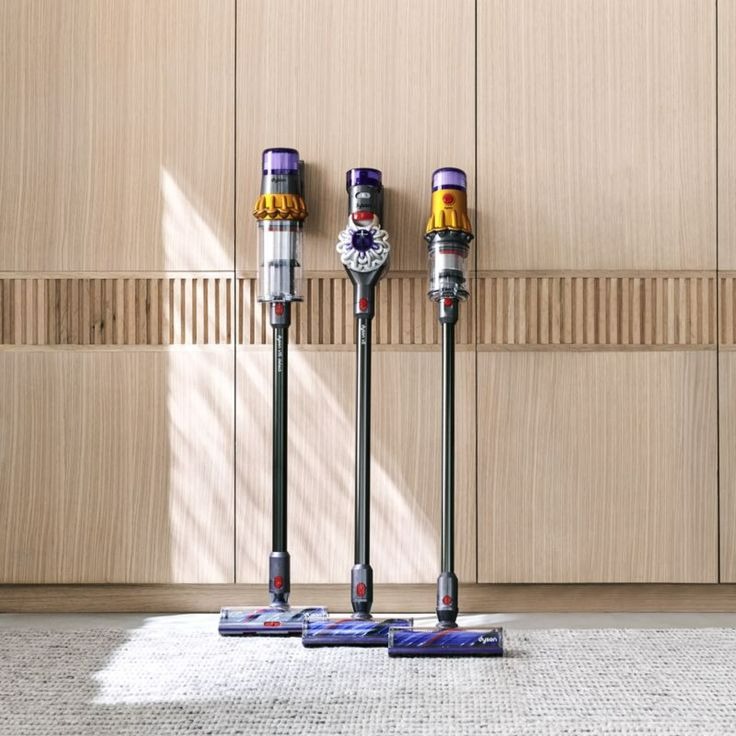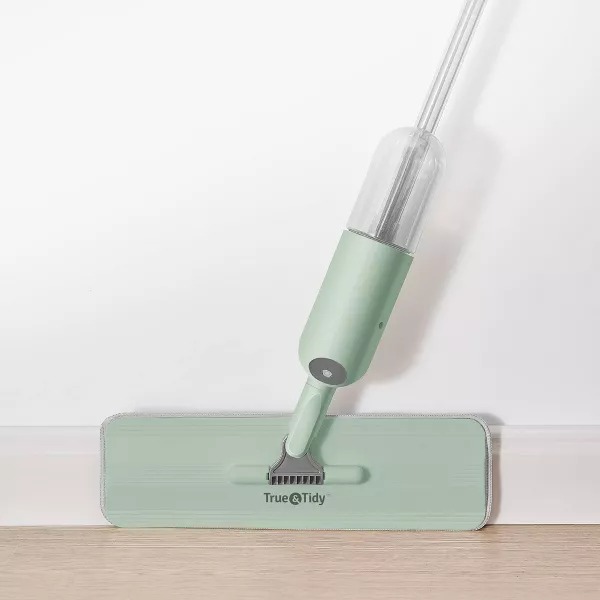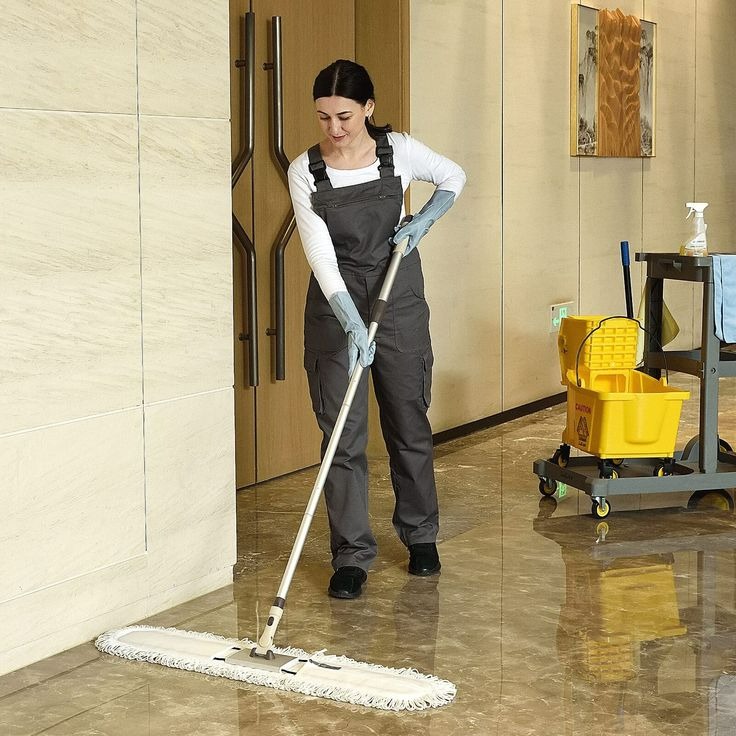Importance of Choosing the Right Industrial Mop
Selecting the ideal industrial mop is crucial for multiple reasons. A well-chosen mop can significantly enhance the effectiveness and efficiency of your cleaning routine. On the other hand, choosing the wrong type can result in wasted effort, increased costs, and poor cleaning results.
Here are the key reasons why the right industrial mop selection is essential:
- Cleaning Efficiency: A mop that’s a good fit for the task at hand will clean more thoroughly and quickly. This is especially important in industrial settings where cleanliness is often equated with safety.
- Ergonomics: The right mop reduces physical strain on the user, minimizing the risk of workplace injury. Mops designed for ease of use can improve employee morale and productivity.
- Durability: Industrial environments tend to be tough on cleaning equipment. A durable mop stands up to the challenge, providing better performance over time and saving on replacement costs.
- Adaptability: Different industrial environments require different types of cleaning. The right mop should be versatile enough to handle a variety of cleaning situations, whether it’s dealing with oil spills or sanitizing a healthcare facility.
- Maintenance: Mops that are easy to clean and maintain are more likely to be cared for properly, which can impact both their longevity and the cleanliness of the environment they are used in.
In conclusion, being mindful of the mop you select for your industrial cleaning needs will pay off with improved results, better resource management, and a safer, healthier workplace. Aim to integrate this awareness with your knowledge of industrial mop types, their uses, and maintenance practices for optimal cleaning efficiency.

Types of Industrial Mops and Their Uses
Understanding the different types of industrial mops and their applications is crucial. Here’s a breakdown of the common variants and their specific uses. Remember, the type of mop you choose should match the cleaning task.
Wet Mops for Heavy-Duty Cleaning
Wet mops are essential for tackling tough grime and spills in industrial settings. They typically have highly absorbent heads, often made from cotton or synthetic blends. You’ll find them perfect for cleaning large floor areas quickly. They are especially useful in manufacturing plants, where spills are common.
Dry Mops for Dust Control
Dry mops are designed to trap and hold dust without the use of water or cleaning solutions. They usually feature a wide, flat head covered with a dust-collecting material, like cotton or microfiber. These mops are ideal for daily maintenance in warehouses and other spaces where dust builds up.
Microfiber Mops for Healthcare Facilities
Microfiber mops are becoming the go-to for healthcare settings due to their superior cleaning and bacteria-trapping capabilities. They are made with fine synthetic fibers that pick up microbes and dirt effectively. They also require less water and chemicals, which is important in environments where sanitation is paramount. Such mops support infection control efforts in clinics, hospitals, and care homes.
Factors to Consider When Selecting an Industrial Mop
Selecting the right industrial mop involves weighing several factors to ensure you get the best fit for your needs. Here’s what to look out for:
Material and Durability
The material of the mop head is a pivotal factor that affects its durability and cleaning effectiveness. Options typically include cotton, microfiber, and synthetic blends. For instance:
- Cotton: Good for soaking up large amounts of liquid but may not be the most durable.
- Microfiber: Excellent for trapping dust and bacteria, and tends to last longer.
- Synthetic Blends: Often designed for specific tasks, like scrubbing, and are quite durable.
Consider the demands of your industry when choosing the material. A mop that can withstand frequent use in harsh conditions is a smart investment.
Mop Size and Ergonomics
The size of the mop head should align with the space you are cleaning. Larger mop heads cover more area but may be harder to handle. Ergonomics plays a vital role in preventing strain and injury, so look for mops with handles at a comfortable height and that allow for a natural grip.
- Small Mop Heads: Best for smaller, confined spaces.
- Large Mop Heads: Suitable for expansive areas, like warehouses.
Think about the person using the mop too. A mop that is too heavy or awkward can lead to fatigue and possible injury over prolonged use.
Ease of Maintenance and Cleaning
Mops require regular cleaning and maintenance to keep them in top shape. Choose mops with heads that are easy to remove and wash, or consider disposable options for ease of use. Ensuring the mop can be easily cleaned will prevent the spread of dirt and bacteria during the cleaning process.
- Removable Heads: These can often be machine washed and replaced as needed.
- Disposable Heads: Provide a quick and hygienic option but can be more costly over time.
Remember, efficient mopping isn’t just about the mop itself, but also about how easy it is to keep the mop clean and functioning properly.

Mopping Accessories and Attachments
When it comes to thorough and efficient industrial cleaning, the mop itself is just the start; accessories and attachments play a crucial role as well. Here are some indispensable tools that pair with industrial mops.
Mop Handles and Frames
Choosing the right mop handle and frame is important for several reasons:
- Length: The handle should be long enough to avoid bending, which helps prevent back strain.
- Materials: Handles made from aluminum or composite materials offer durability and lightweight handling.
- Grip: Look for handles with a comfortable grip to reduce hand fatigue.
- Swivel: A frame that allows for full-range swivel motion can increase maneuverability.
Ensure the frame is compatible with the mop head size for proper fit and performance.
Mop Buckets and Wringers
For wet mopping, buckets and wringers are essential:
- Capacity: Select a bucket with enough capacity to avoid frequent refilling, thus saving time.
- Mobility: Buckets with wheels make transport across large spaces easier.
- Wringing Mechanism: A good wringer removes excess liquid efficiently, reducing drying time.
- Material: Heavy-duty plastic or metal buckets last longer in tough industrial environments.
Choose accessories that suit your industrial mop and cleaning requirements for the best results. These additional tools can significantly impact cleaning efficiency, worker comfort, and overall productivity.
Best Practices for Industrial Mopping
Ensuring that you mop effectively is just as important as choosing the right industrial mop. Here are some best practices that you should follow for optimal cleaning results.
Proper Techniques for Effective Cleaning
To get the most out of your industrial mop, consider these cleaning techniques:
- Prep the Area: Remove large debris before mopping. This makes cleaning more efficient.
- Use the Right Cleaner: Pick a cleaning solution that suits the floor type and mop material.
- Mop in Sections: Clean small areas at a time for thorough results. Do not rush.
- Change Water Regularly: Dirty water equals poor cleaning. Refresh mop buckets often.
- Wet Floor Signs: Use signs to prevent accidents on freshly mopped floors.
By following these steps, you ensure a cleaner, safer industrial environment.
Maintaining Your Mop for Longevity
Take care of your mop to extend its life and maintain its cleaning effectiveness:
- Wash Regularly: Clean mop heads after each use to prevent dirt buildup.
- Dry Properly: Air-dry mops completely to avoid mildew and bad odors.
- Store Correctly: Hang mops or store them head-up to keep their shape.
- Replace When Needed: Swap out mop heads when they show wear or tear.
Regular maintenance keeps your industrial mop in top condition, ready for the next clean-up task.

Innovations in Industrial Mopping Technology
The cleaning industry constantly evolves with new technologies to improve efficiency and effectiveness. Industrial mopping is no exception. Innovations in mopping technology offer advanced solutions that can significantly boost cleaning performance in industrial spaces. From automated mopping robots to advanced microfiber technology, these breakthroughs help businesses maintain high standards of cleanliness with less effort and time.
Eco-Friendly Mops and Sustainable Practices
In response to growing environmental concerns, the industrial mop market is seeing a rise in eco-friendly options. These mops are made from sustainable materials, have reusable components, and use biodegradable or recyclable parts. By opting for an industrial mop designed with sustainability in mind, facilities contribute to a healthier planet. Here’s what you can find in the latest eco-friendly mops:
- Sustainable Materials: Look for mops made of bamboo or other fast-growing, renewable resources.
- Reusable Mop Heads: Some mop heads can be cleaned and reused multiple times, reducing waste.
- Water-saving Features: Mops that use less water help conserve this precious resource and are better for the environment.
These green solutions don’t just help the environment; they can also be cost-effective in the long run due to their durability and reusability.
Advanced Mopping Systems for Improved Efficiency
Technology has also given rise to advanced mopping systems that streamline the cleaning process. Here are key features of these systems:
- Automated Machines: Robotic mops can clean large areas without human intervention, freeing up staff for other tasks.
- Microfiber Technology: New weaves and designs in microfiber mop heads improve dirt and bacteria removal.
- Ergonomic Designs: Mops with adjustable handles and articulated frames make it easier and faster to clean without strain.
By leveraging these innovative mopping solutions, industries can achieve higher cleaning standards with greater efficiency and less environmental impact. Investing in updated mopping technology is a smart move for businesses looking to improve their cleaning processes and sustainability efforts.
